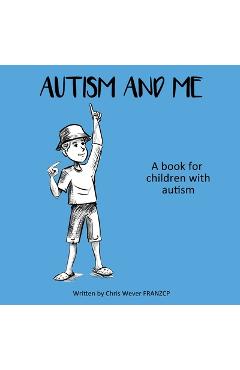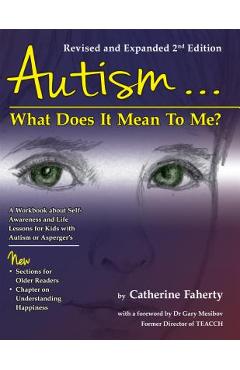Autism and Me: A book for children with autism - Chris Wever

Detalii Autism and Me: A book
libris.ro
99.14 Lei
123.92 Lei
Juvenile Nonfiction
Chris Wever
Autism and Me: A book - Disponibil la libris.ro
Pe YEO găsești Autism and Me: A book de la Chris Wever, în categoria Juvenile Nonfiction.
Indiferent de nevoile tale, Autism and Me: A book for children with autism - Chris Wever din categoria Juvenile Nonfiction îți poate aduce un echilibru perfect între calitate și preț, cu avantaje practice și moderne.
Preț: 99.14 Lei
Caracteristicile produsului Autism and Me: A book
- Brand: Chris Wever
- Categoria: Juvenile Nonfiction
- Magazin: libris.ro
- Ultima actualizare: 15-12-2024 01:42:32
Comandă Autism and Me: A book Online, Simplu și Rapid
Prin intermediul platformei YEO, poți comanda Autism and Me: A book de la libris.ro rapid și în siguranță. Bucură-te de o experiență de cumpărături online optimizată și descoperă cele mai bune oferte actualizate constant.
Descriere magazin:
Many children, teenagers and grown-ups see and interact with the world from a different perspective. They are often described as quirky or eccentric. They struggle with social interaction and are often upset by change or too much noise and activity around them. But they often have strengths in many areas-with extraordinary memories, attention to detail, extensive knowledge in specific subjects, and possess exceptional skills in many areas such as technology or creative arts. Many of these individuals are on the Autistic Spectrum or have been given the diagnosis of Autistic Spectrum Disorder (ASD). ASD is a different way of viewing and interacting with the world but it can cause distress for the child and their families. ASD is common with rates of 1 in 65 children, with a dramatic increase in diagnosis over the last decade, especially in females. When I started my child psychiatry training (over thirty years ago) colleagues used to laugh and say that I saw autism everywhere! Clinicians and educators are now recognising the mild and moderate ends of the spectrum. There is also awareness that many people have traits of ASD but may not qualify for a formal diagnosis. Reactions to a diagnosis of ASD vary in children and their families but it is usually met with relief for both the child and their family. As a child psychiatrist, I see many young people with ASD and I have found children and families that embrace the diagnosis of ASD are able to focus on their strengths and manage their difficulties. This has the best outcomes because understanding and accepting something is the first step to better managing it. Autism and Me explores some of the difficulties that a young person with ASD may encounter and helps to make them aware of their differences, embrace them, and learn the skills to cope with life\'s challenges. In this book, many different views are described, but each person and their experience is different so they may not identify with all the descriptions in the book or may think some things have been left out.

Produse asemănătoare

What About Me?: A Book By and For An Autism Sibling - Mandy Farmer
![]() libris.ro
libris.ro
Actualizat in 28/10/2025
90.6 Lei

You, Me, and Autism: How to Support, Befriend, and Work with Autistic People - Phoebe Jordan
![]() libris.ro
libris.ro
Actualizat in 28/10/2025
139.22 Lei
Produse marca Chris Wever

Autism and Me: A book for children with autism - Chris Wever
![]() libris.ro
libris.ro
Actualizat in 15/12/2024
99.14 Lei



